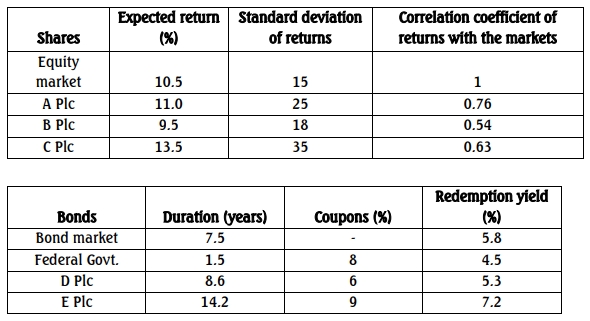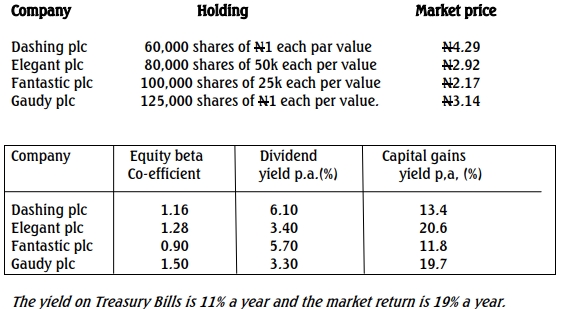- 15 Marks
FM – Nov 2016 – L3 – SC – Q5 – Portfolio Management
Assess CAPM's basic assumptions and determine overvalued securities among four companies using CAPM metrics.
Question
a. Capital Asset Pricing Model (CAPM) is an equilibrium model of the trade-off between expected portfolio return and unavoidable risk.
What are the basic assumptions on which this model is based? (6 Marks)
b. Currently, the rate of return on the Federal Government Bond redeemable at par in the year 2018 is 5%. The securities of four companies, Akira Plc., Bombadia Plc., Courage Plc., and Divine Plc., have expected returns of 12%, 9.5%, 10.5%, and 13%, respectively. The average expected return on the market portfolio is 10%, subject to a 6% risk (standard deviation). Other relevant information relating to the four securities of the companies is as stated below:
| Company | Standard Deviation | Correlation Coefficient |
|---|---|---|
| Akira Plc | 0.080 | 0.975 |
| Bombadia Plc | 0.075 | 0.640 |
| Courage Plc | 0.090 | 0.740 |
| Divine Plc | 0.150 | 0.680 |
You are required to show which of the companies is/are overvalued. (9 Marks)
Find Related Questions by Tags, levels, etc.
- Tags: Assumptions, CAPM, Market Portfolio, Portfolio analysis, Risk-Return Trade-Off, Valuation
- Level: Level 3
- Topic: Portfolio Management
- Series: NOV 2016


